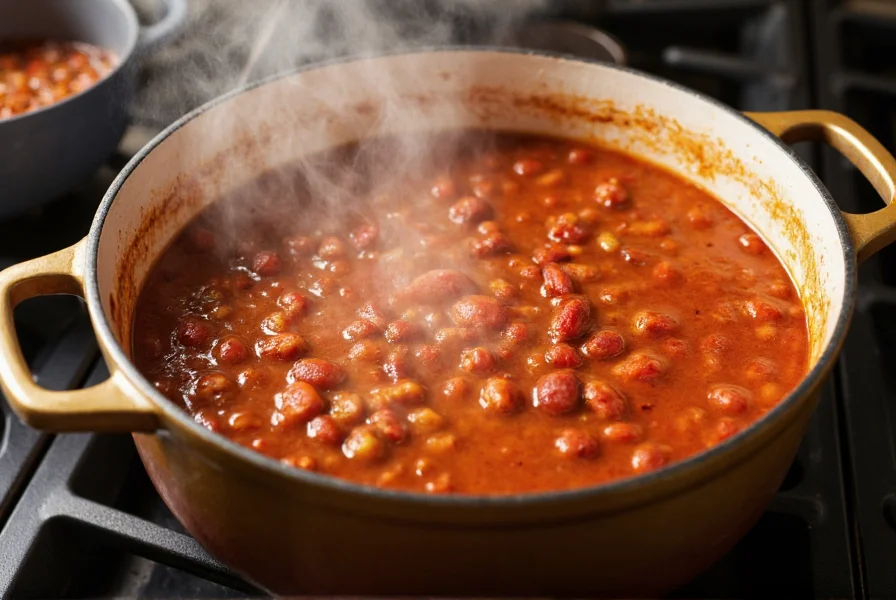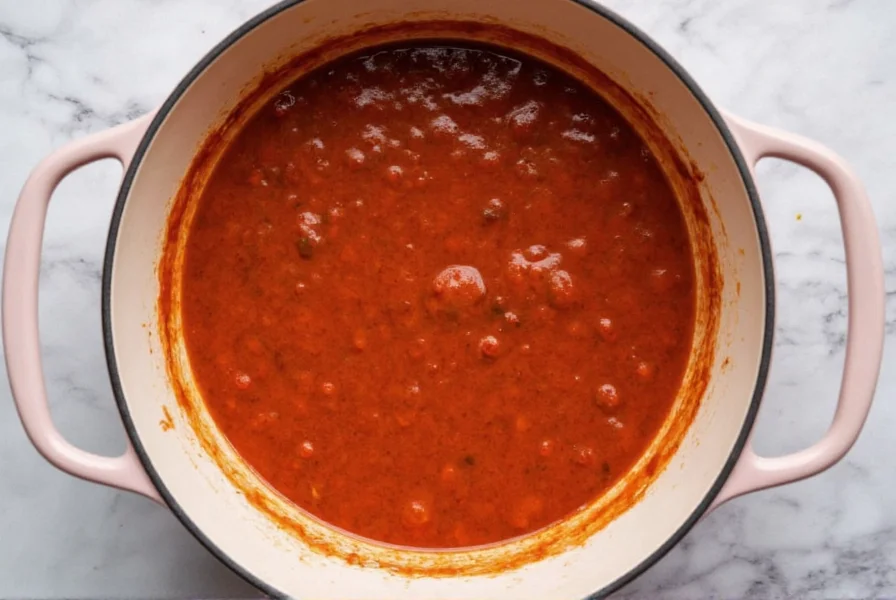Nothing ruins a perfect pot of chili like an unexpectedly thin, watery consistency. Whether you've added too much broth or your tomatoes released more liquid than anticipated, achieving that ideal thick, hearty texture is essential for authentic chili. The good news is you have multiple reliable options to rescue your dish without compromising flavor. Understanding how to make chili thicken properly separates novice cooks from chili experts who consistently deliver that perfect spoon-coating consistency.
Why Your Chili Might Be Too Thin
Before reaching for thickening agents, understand why your chili turned out watery. Common culprits include:
- Excessive liquid from canned tomatoes or broth
- Not cooking long enough to reduce natural moisture
- Overcrowding the pot with ingredients that release water
- Using lean meats that don't render enough fat for proper emulsification
Identifying the cause helps you choose the most appropriate chili thickening techniques for beginners and prevents future issues.
Top 7 Methods to Thicken Chili Effectively
1. Simmer Uncovered (The Flavor-Enhancing Method)
This is the simplest and most recommended approach for how to fix watery chili. Remove the lid and simmer your chili over low heat for 20-30 minutes. As water evaporates, your chili naturally thickens while flavors concentrate and deepen. Stir occasionally to prevent sticking.
Pro tip: This method works best when you have extra time before serving. For every cup of excess liquid, plan for approximately 15 minutes of uncovered simmering.

2. Cornstarch Slurry (Quick Fix Solution)
When you need how to thicken chili quickly, a cornstarch slurry delivers immediate results:
| Cornstarch Slurry Ratio | Chili Quantity | Instructions |
|---|---|---|
| 1 tablespoon cornstarch + 2 tablespoons cold water | 4-6 servings | Mix thoroughly, then whisk into simmering chili. Wait 5 minutes before assessing thickness. |
| 2 tablespoons cornstarch + 4 tablespoons cold water | 8-10 servings | Add gradually while stirring constantly to prevent clumping. |
Never add dry cornstarch directly to hot chili—it will clump. Always create a slurry with cold liquid first. This technique works for how to thicken chili without flour for gluten-free diets.
3. Mashed Beans (Natural Thickening)
For bean-based chili recipes, this method enhances texture without adding foreign ingredients. Remove one cup of chili (primarily beans and liquid), mash thoroughly, then return to the pot. The released starches and broken-down beans thicken the entire batch while maintaining authentic flavor.
This approach represents one of the best natural ways to thicken chili that doesn't require additional pantry items. It's particularly effective for vegetarian chili recipes where meat reduction isn't an option.
4. Tomato Paste Boost
Add 2-3 tablespoons of tomato paste to your chili and simmer for 10 minutes. The concentrated tomatoes absorb excess moisture while enhancing the overall flavor profile. This method works especially well for tomato-based chili recipes and addresses how to make chili thicker without changing flavor significantly.
5. Pureed Vegetables
Blend cooked onions, peppers, or even sweet potatoes with a small amount of chili liquid until smooth, then stir back into the main pot. The vegetable fibers create a natural thickening effect while adding nutritional value. This technique offers one of the healthiest approaches to chili thickening techniques for beginners.

6. Masa Harina (Traditional Thickener)
Common in authentic Texas-style chili, masa harina (corn flour) adds a subtle corn flavor while thickening. Whisk 1-2 tablespoons with cold water to create a slurry, then incorporate into simmering chili. This method provides a more traditional approach to how to thicken chili without flour while honoring regional cooking techniques.
7. Fat Separation Technique
After cooking, refrigerate your chili overnight. The next day, skim off the solidified fat layer from the top. Reheat the chili gently—the absence of this fat layer allows the remaining ingredients to bind more effectively, creating a thicker consistency. This method works particularly well for meat-based chili recipes.
Preventing Thin Chili in Future Batches
The best solution is prevention. Follow these guidelines for perfect chili consistency every time:
- Start with less liquid than recipes suggest—you can always add more
- Brown meats properly to render fat that helps emulsify the mixture
- Add tomatoes gradually, assessing consistency as you go
- Use the "spoon test"—properly thickened chili should coat the back of a spoon without immediately running off
Troubleshooting Thickening Mistakes
Even experienced cooks encounter issues. Here's how to fix common problems:
Chili Became Too Thick
Add small amounts of broth, beer, or water (1/4 cup at a time) while reheating gently. Avoid adding cold liquid to hot chili, which can affect texture.
Flavor Changed After Thickening
Balance flavors by adding a pinch of sugar to counteract acidity from tomato-based thickeners, or a dash of vinegar to brighten cornstarch-thickened chili. Always taste and adjust seasonings after thickening.
FAQ: Common Questions About Thickening Chili
Can I use flour to thicken chili without creating lumps?
Yes, but you must create a roux or slurry first. Mix 1 tablespoon of flour with 1 tablespoon of cold water or broth to form a smooth paste before adding to simmering chili. Whisk constantly for 2-3 minutes until thickened. For lump-free results, never add dry flour directly to hot liquid.
How long does it take to thicken chili by simmering uncovered?
Simmering uncovered typically takes 20-30 minutes to noticeably thicken chili, depending on your stove's heat and the amount of excess liquid. For every cup of liquid you need to reduce, plan for approximately 15 minutes of gentle simmering. Stir occasionally to prevent sticking on the bottom.
Will adding more beans thicken chili effectively?
Adding whole beans alone won't significantly thicken chili, but mashing some of the beans you already have in the pot will. Remove about one cup of chili (mostly beans and liquid), mash thoroughly with a fork or potato masher, then return it to the pot. The broken-down beans release starches that naturally thicken the entire batch.
Can I use instant potato flakes to thicken chili?
Yes, instant potato flakes work as a quick thickener. Add one tablespoon at a time while the chili simmers, stirring well after each addition. They absorb liquid rapidly without altering flavor significantly. Use this method only when other options aren't available, as it's not traditional and can slightly change texture.
Why does my chili thin out again after initially thickening?
This happens when starch-based thickeners (like cornstarch) break down from prolonged cooking or excessive stirring. Acidic ingredients like tomatoes can also cause re-thinning. To prevent this, add starch thickeners during the last 10-15 minutes of cooking. For best results, use the simmering method for primary thickening and reserve starch thickeners for final adjustments.











 浙公网安备
33010002000092号
浙公网安备
33010002000092号 浙B2-20120091-4
浙B2-20120091-4